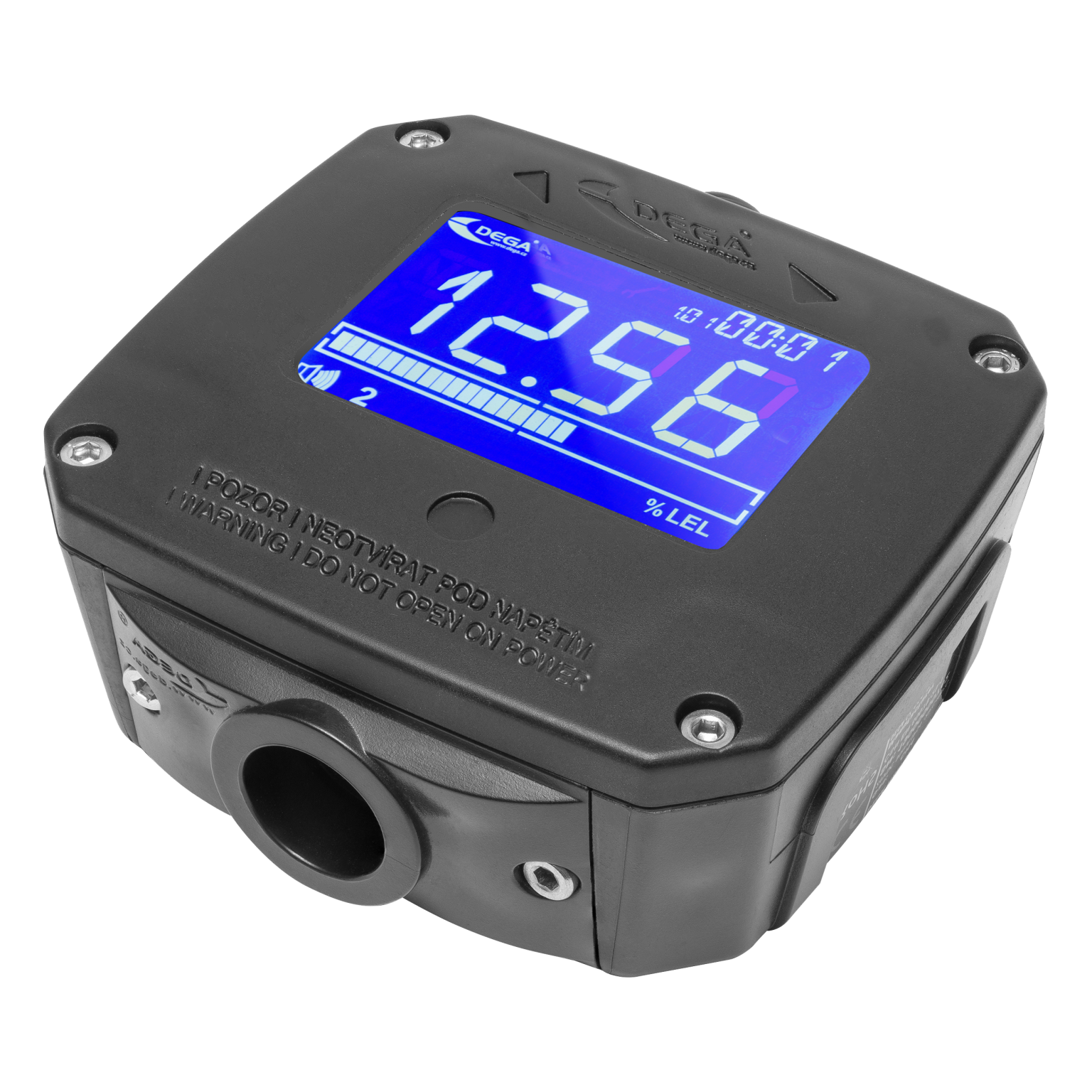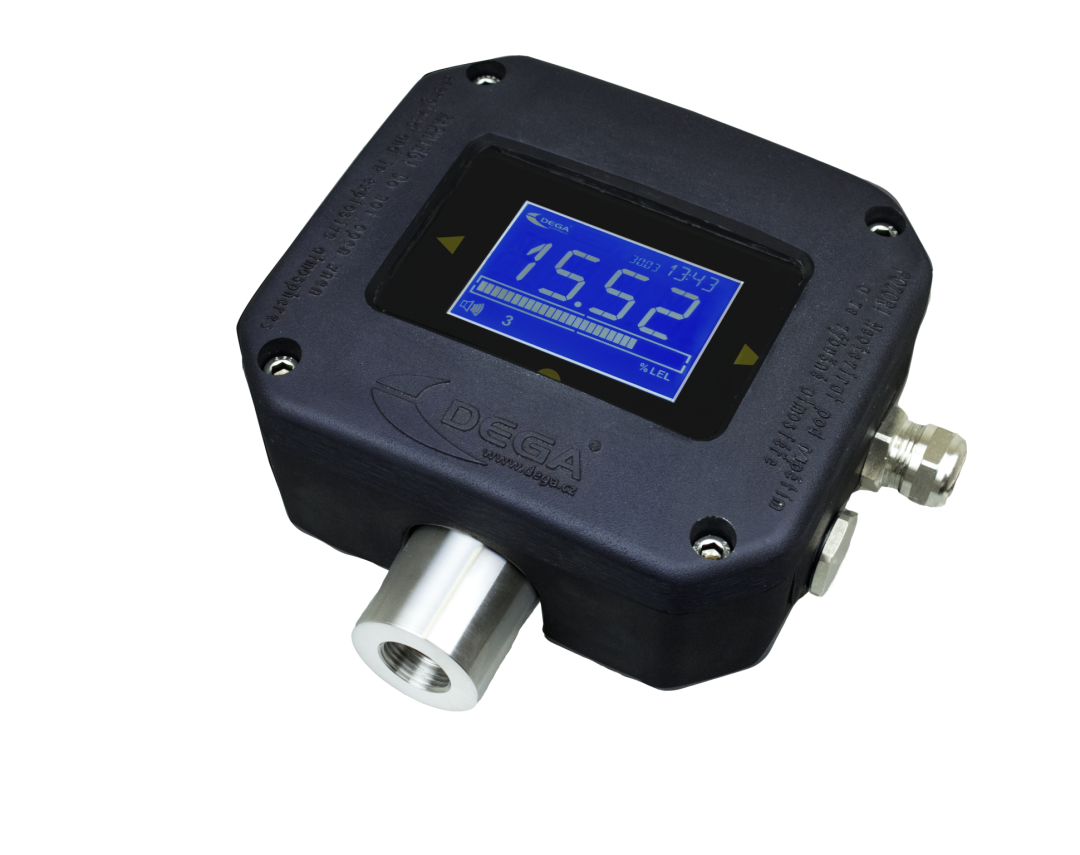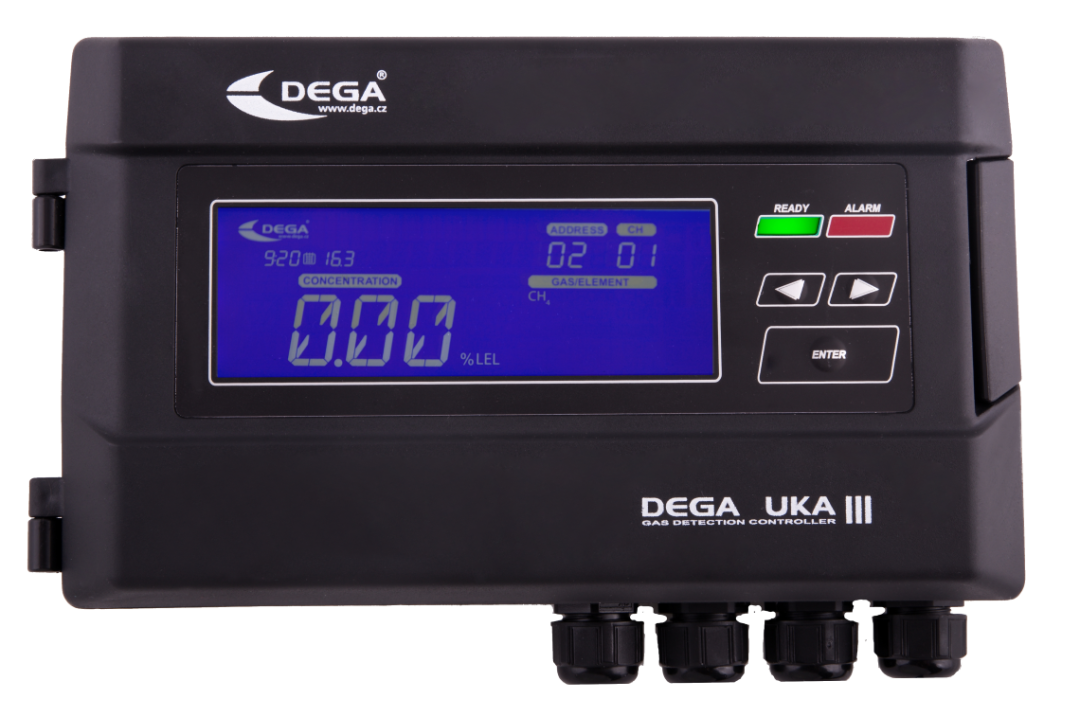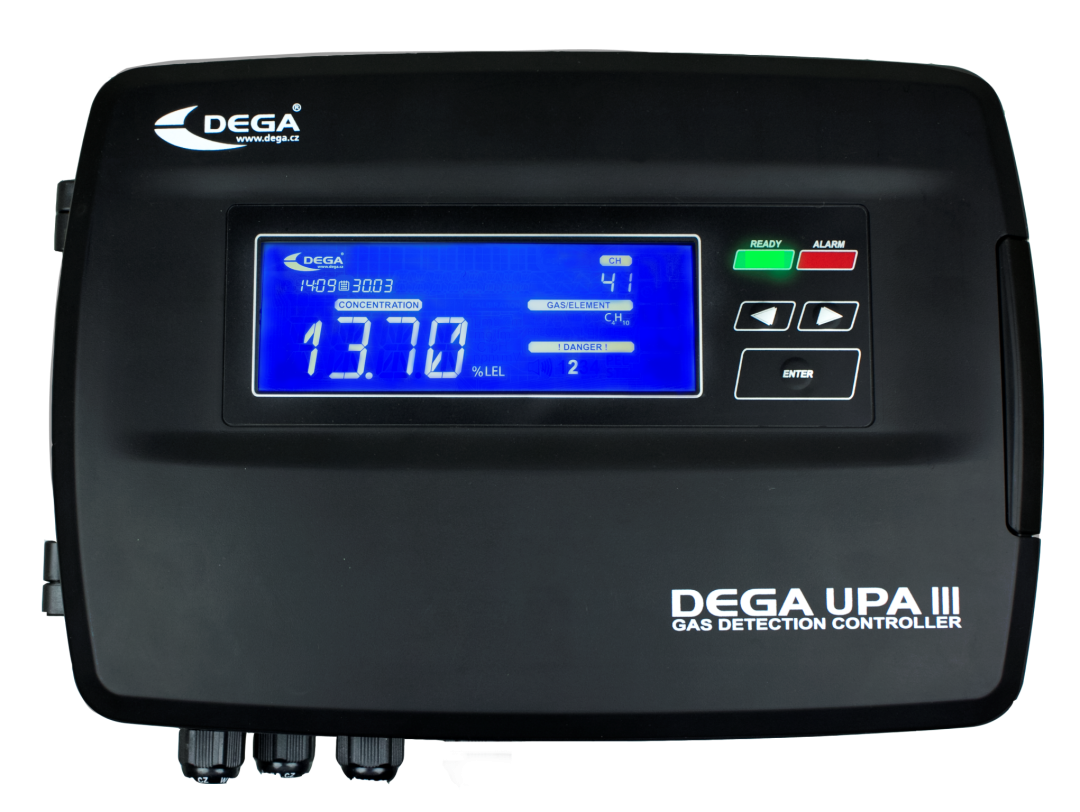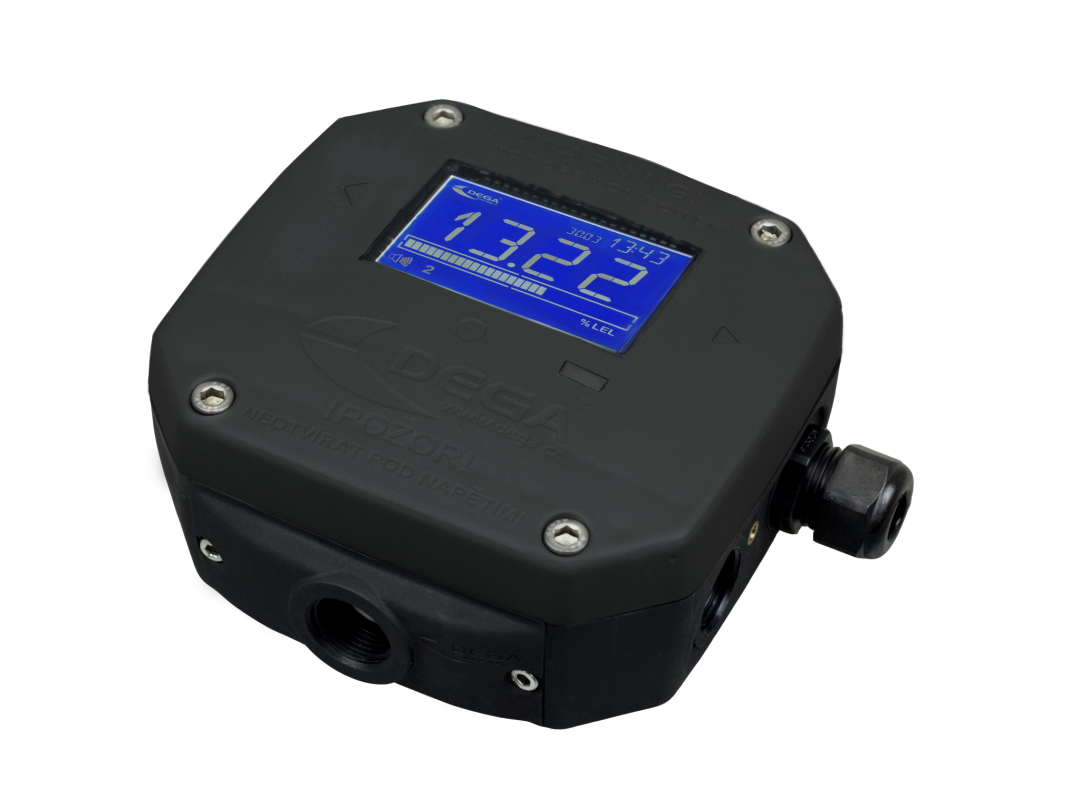Product Description
DEGA NB III LCD transmitter is a part of the gas detection system. Transmitter is located in monitored premises in which critical situations due to accumulation of flammable or toxic substances can occur. The transmitter has an LCD display to show measured concentrations of detected substances in real time.The transmitter can be connected to control panels DEGA UPA III, DEGA UKA III and DEGA UDA III. Standard Output : RS485, with 1x cabel gland.
Basic Gas Detection Methods:
CL – catalytic sensor (Pelistor)
Works on the principle of catalytic combustion – the gas concentration is measured in accordance with the amount of heat released during a controlled combustion reaction. The reaction is prompted by a suitable temperature and the presence of a catalyst. These sensors can be used for the detection of a wide range of combustible gases. The sensors are characterised by their fast response, long life and high degree of stability. For their proper functioning they require at least 10% of the oxygen in the air. The transmitter sensor is sensitive to compounds of silicon, the introduction of which can result in poisoning of the sensor.
EL – electrochemical sensor
This operates on the principle of measurement of the change in the electrical parameters of electrodes placed in electrolyte, due to the redox reaction of detected gas on their surface. These sensors have a favourable selectivity and the capacity to detect very low concentrations of gases. In the DEGA systems they are utilised primarily for the detection of toxic gases.
IL – infrared sensor
The highest-quality detecting method, which works on the principle of infrared spectroscopy. These sensors excel in the high level of their selectivity and their resistance in environments containing corrosive substances. The sensors have a very long life (10+ years).
SL – semiconductor sensor
The least expensive method of sensing works on the principle of the measurement of the change in the electrical conductivity of semiconductors that occurs in the event of a change in the concentration of the gas detected. Its advantages are its long operating life when it is used in a clean environment and also the wide range of models available for different types of gases and vapours. Its disadvantages are its low degree of selectivity (a lesser ability to distinguish between the different types of gases in the mixture) and in environments containing corrosive substances (alkaline and acidic compounds, silicones, sulphur compounds, etc.) an accelerated degradation of the sensor takes place.
PID – photoionization sensor
Typical photoionization detectors measure volatile organic compounds and other gases in concentrations from sub parts per billion to 10 000 parts per million (ppm). The photoionization detector is an efficient and inexpensive detector for many gas and vapor analytes. PIDs produce instantaneous readings, operate continuously, and are commonly used as detectors for gas chromatography or as hand-held portable instruments. Hand-held, battery-operated versions are widely used in military, industrial, and confined working facilities for health and safety. Their primary use is for monitoring possible worker exposure to volatile organic compounds (VOCs) such as solvents, fuels, degreasers, plastics & their precursors, heat transfer fluids, lubricants, etc. during manufacturing processes and waste handling.

